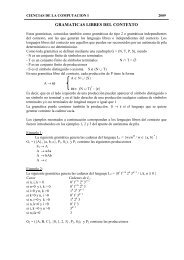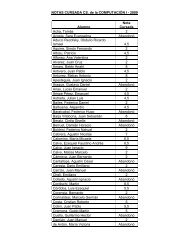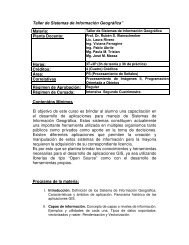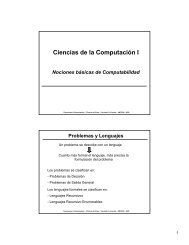Libro de Resúmenes / Book of Abstracts (Español/English)
Libro de Resúmenes / Book of Abstracts (Español/English)
Libro de Resúmenes / Book of Abstracts (Español/English)
Create successful ePaper yourself
Turn your PDF publications into a flip-book with our unique Google optimized e-Paper software.
Resumenes 126<br />
The lagoon <strong>of</strong> Chascomús is the largest one pertaining to the “Linked<br />
Lagoons” <strong>of</strong> the province <strong>of</strong> Buenos Aires (Argentina); it has a surface <strong>of</strong><br />
3044 ha, a length <strong>of</strong> 15 km and a wi<strong>de</strong> <strong>of</strong> 5 km; its average <strong>de</strong>pth is 1.52 m<br />
and its maximum <strong>de</strong>pht is 2.50 m. The lagoon bottom is composed <strong>of</strong><br />
muddy clay and muddy sand, and lodges a great variety <strong>of</strong> fish <strong>of</strong><br />
commercial interest. Many <strong>of</strong> these fish are affected by periodic anoxic<br />
crises that occur in association with high temperatures and low rain.<br />
Previous studies have <strong>de</strong>monstrated a strong association between dissolved<br />
oxygen (DO) concentration and the amount <strong>of</strong> suspen<strong>de</strong>d matter (seston).<br />
Seston inclu<strong>de</strong>s live organisms, <strong>de</strong>ad organic matter and inorganic matter.<br />
We present here a mathematical mo<strong>de</strong>l <strong>of</strong> the seston dynamics. The mo<strong>de</strong>l<br />
was parametrised with existing data and a DO prediction was ma<strong>de</strong> taking<br />
into account the negative correlation between seston and DO.<br />
We consi<strong>de</strong>r that seston dynamics can be represented by a<br />
differential equation including a growth rate (algae growth) related to light<br />
and temperature, and a mortality/<strong>de</strong>composition rate correlated with<br />
temperature only:<br />
dt<br />
−k1<br />
sin<br />
[ ( B sin t + k )( 1 − e ) − C sin t − q ] ⋅ s<br />
ds t<br />
=<br />
0<br />
Temperature and light are periodic variables throughout the year.<br />
The grow rate is consi<strong>de</strong>red asimptotic with light.<br />
The solution <strong>of</strong> the equation is:<br />
ln<br />
−k<br />
sin<br />
e<br />
cost<br />
⎛ B<br />
⎜<br />
⎝ k1<br />
1<br />
0<br />
() s = ( C − B)<br />
cost<br />
+ ( k − q ) ⋅ t + ⎜ sin t + ⎟ + E<br />
0<br />
The mo<strong>de</strong>l has an equilibrium point that fluctuates throughout the<br />
year following the forcing variables (temperature and light). The mo<strong>de</strong>l fits<br />
very well to experimental data <strong>of</strong> seston and DO. This mo<strong>de</strong>l can help us to<br />
predict anoxic crises and to predict them.<br />
0<br />
t<br />
0<br />
k<br />
k<br />
1<br />
⎞<br />
⎟<br />
⎠



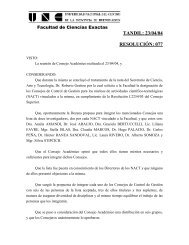
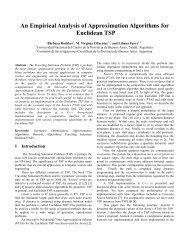
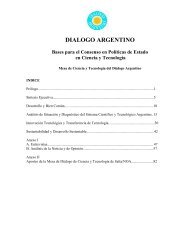

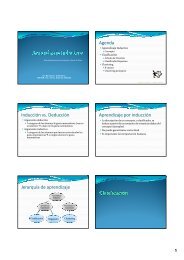
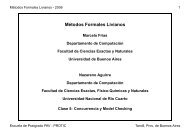
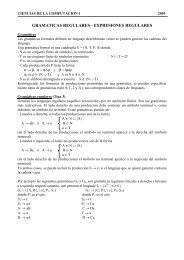

![Clase 13 [pdf]](https://img.yumpu.com/19616969/1/190x245/clase-13-pdf.jpg?quality=85)

